Mangiare, bere vino e essere felici! Eat, drink wine and be merry!!
Posted on November 27,2012 By John Compisi
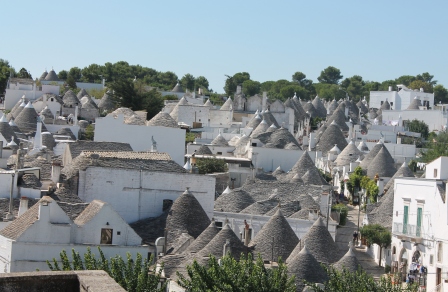
Mangiare, bere vino e essere felici! Eat, drink wine and be merry!!
A recent trip to Puglia, (the Italians call Apulia), and an even more recent wine event in San Francisco highlighted the advances being made in quality and marketing of these complex and interesting wines. Puglia is bounded on the east by the Adriatic Sea, the Ionian Sea to the southeast, and the Strait of Òtranto and Gulf of Taranto in the south. The soils are exceptionally fertile – mostly volcanic and limestone, clay and sandstone predominate. Geographically, the Province of Puglia is long (985 KM – about 600 miles) and narrow with no point being more than about 65 KM (about 40 miles) from the sea. It is this maritime influence that make this baking summer weather able to produce quality grapes.
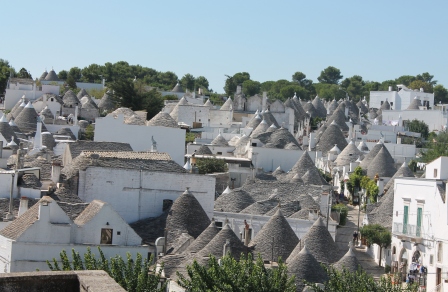
The amazing trulli of Alberobello in Puglia (Linda C)
Historically an agrarian culture, Puglia remains highly cultivated and accounts for at least 35% of all olives produced in Italy (70% if combined with Calabria – the toe of the boot). Additionally, Puglia, one of Italy’s 20 wine growing regions, produces more wine than any other Italian Province. But quantity does not necessarily translate to quality. There is a distinct difference between the northern part of Puglia, more hilly than the south, where the wine making is more reflective of the practices employed in Umbria and Tuscany while in the southern Salento Peninsula they are more aligned with the practices employed by earlier Greeks and Romans.

Daniele Cirsone presents overview of Puglia (Linda C)
Twenty-five years ago most of the wines grown in Puglia were shipped to northern Italy or France to supplement lower harvests or to provide structure to wines from poor harvests. That has been changing, partially because of the European Union economic advances and the need to produce higher revenues. This is being accomplished by reducing tons per acre thereby increasing the intensity and flavor profiles of the grapes harvested.

Fabio Cascione of Vigne & Vini (Linda C)
There are twenty-nine Denominazione di Orogine Controllata (DOC), four Denominazione di Origine Controllata e Garantita (DOCG) and six Indicazione Geografica Tipica (IGT – table wines) wines produced in Puglia. Unlike an AVA in the US that designates a geographic grape growing area, in Italy, a DOC designates which grapes can be grown in a geographic area. The most prominent white grape varietals of Puglia include Bombino Bianco, Bianco d’Alessano and Verdeca although in the past 15-20 years international varietals like Chardonnay and Sauvignon have been increasing in the percentage of overall production. The main red grapes are Aglianico, Negroamaro (the principal grape in Salice Salentino wine), Malvasia Nera and Primitivo di Manduria (the genetic predecessor of California’s Zinfandel grape).
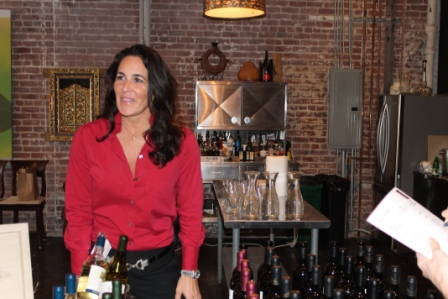
Kari Moore Chateau Ste Michelle and Tormaresca (Linda C)
The aforementioned wine event in San Francisco was sponsored by Wines of Puglia II, a temporary association of five wine companies that represent the entire region. Two of these five companies were represented at the event: Tormaresca and Vigne &Vini. Tormaresca, owned by the Antinori family of Tuscany and Chianti fame, was established in Puglia in 1998 and clearly fits the category of mega-producer with annual production of 2.8 million bottles. Vigne & Vini, owned and operated by Cosimo Varvaglione and his wife Maria Teresa, is small by comparison but still represents a large market position with about 700,000 bottles annually. Both producers have distribution in the United States. Tomaresca is partnered with Ste Michelle Wine Estates for distribution in the USA (they also partner on wine production).
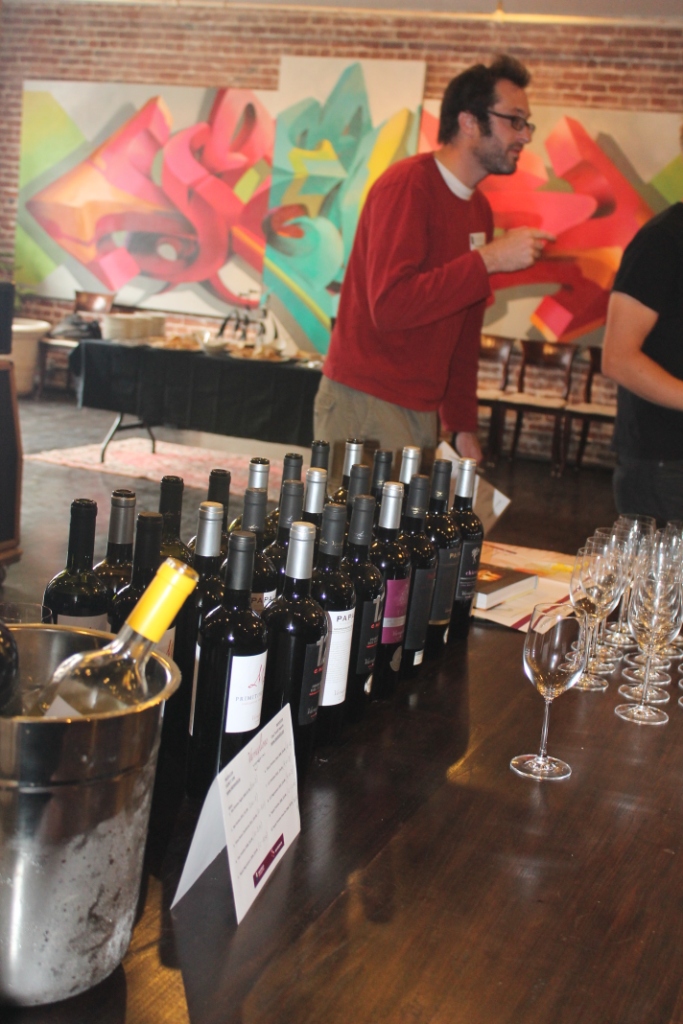 Wines of Puglia wines (Linda C)
Wines of Puglia wines (Linda C)
A brief overview of Puglian wines and the terroir was presented by Daniele Cirsone, representing Wines of Puglia. Each producer brought a wide selection of their wines both whites (Bianco), rosé (Rosato) and reds (Rosso).
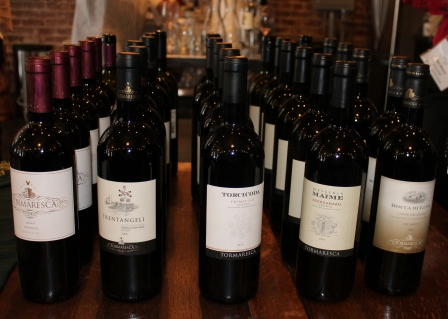
Tormaresca wines (Linda C)
To start, Vigne & Vini, who specializes in native red Puglian varietals of Primitivo, Negroamaro and Malvasia Nera, offered their 2011 Salento IGP Moi Verdeca. It was well balanced, crisp and very fresh flavored. The reds offered quickly upped the flavor scale! In rapid order the 2010 Primitivo Del Salento (IGP), 2008 Papale Primitivo di Manduria and 2008 Chicca Primitivo Dolce stood out for ruby red color and full fruit flavors. Very approachable and full bodied enough to stand up to Italian food.
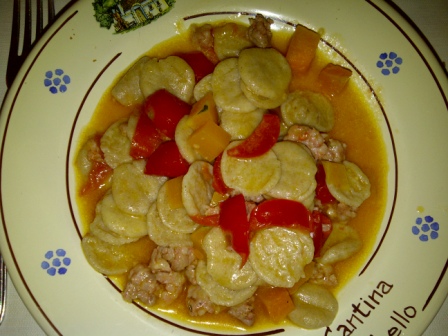
Actual plate of hardy pasta from recent trip to Puglia (Linda C)
Tormaresca was not to be outdone. The 2011 IGT Chardonnay (100%) was floral in bouquet while fresh and intense. Would be a good companion to fish or a summer salad. The most enjoyable reds of the several offered were the 2010 Neprica a medium bodied blend of Negroamaro, Primitivo and Cabernet Sauvignon. Soft tannins and drinkability best describes this red. Next, the 2010 Torcicoda Primitivo (100%) Salento IGT offered hints of plums, cherries and figs. Very intense with strong flavors and a good balance. Finally the 100% Aglianico 2006 Bocca di Lupo DOC. It was intense and dark ruby in color with licorice and fig notes.

More trulli in Alberobello (Linda C)
Events of this nature are winning over American wine lovers. The reasonable prices and ever improving quality of Italian wines distributed to the United States from regions like Puglia and Sicily makes them very attractive to a broad range of Americans from entry level through well schooled regular wine drinkers. Italian wines are and have always been made to enjoy with food and although these Puglian wines have not achieved the stature of the killer B’s (Barolo, Barbaresco and Brunello) they can add a special cosmopolitan touch to any American meal. “Mangiate, bevete e siate felici!”